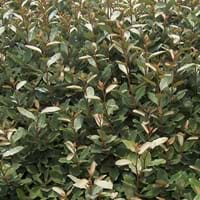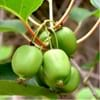Life Span
Perennial
Perennial
Origin
Eastern Asia
China, Japan
Types
Actinidia arguta, Actinidia giraldii, Actinidia hypoleuca
Not Available
Number of Varieties
Not Available
Habitat
Dappled Shade, open Woodlands
subtropical regions, Temperate Regions
USDA Hardiness Zone
3-8
6-9
Sunset Zone
1a, 1b, 2a, 2b, 3a, 3b, 4, 5, 6, 7, 8, 9, 14, 15, 16, 17, 18, 19, 20
4, 5, 6, 7, 8, 9, 10, 11, 12, 13, 14, 15, 16, 17, 18, 19, 20, 21, 22, 23, 24
Habit
Vining/Climbing
Oval or Rounded
Flower Color
White, Ivory
White, Silver
Flower Color Modifier
Bicolor
Not Available
Fruit Color
Green, Yellow green
Reddish Plum
Leaf Color in Spring
Green, Dark Green
White, Dark Green, Sienna
Leaf Color in Summer
Dark Green
White, Dark Green, Sienna
Leaf Color in Fall
Dark Green
White, Dark Green, Sienna
Leaf Color in Winter
Light Green
White, Dark Green, Sienna
Leaf Shape
Oval
broad, flat
Plant Season
Spring, Summer, Fall
Spring, Summer, Fall, Winter
Sunlight
Full Sun, Partial Sun
Full Sun, Partial Sun, Partial shade
Type of Soil
Loam
Clay, Loam, Sand
The pH of Soil
Neutral
Acidic, Neutral, Alkaline
Soil Drainage
Well drained
Well drained
Bloom Time
Spring, Late Spring, Early Summer
Fall, Late Fall
Tolerances
Shade areas
Pollution, Salt
Where to Plant?
Ground, Pot
Ground, Pot
How to Plant?
Grafting, Stem Cutting
Cuttings, root cutting, Seedlings
Plant Maintenance
Low
Medium
Watering Requirements
Average Water Needs, Requires regular watering
Average Water Needs
In Summer
Regular watering required
Lots of watering
In Spring
Moderate
Moderate
In Winter
Average Water
Average Water
Soil pH
Neutral
Acidic, Neutral, Alkaline
Soil Type
Loam
Clay, Loam, Sand
Soil Drainage Capacity
Well drained
Well drained
Sun Exposure
Full Sun, Partial Sun
Full Sun, Partial Sun, Partial shade
Pruning
Remove damaged leaves, Remove dead branches, Remove dead leaves
Remove damaged leaves, Remove dead branches, Remove dead leaves
Fertilizers
Apply 10-10-10 amount, fertilize twice a year
All-Purpose Liquid Fertilizer
Pests and Diseases
Botrytis head rot, Japanese Beetles, Leaf Rollers, Nematodes, Phytophthora, Root rot, Sclerotinia blight, Spider mites, Thripes
Coral Spot, Leaf spot, Red blotch
Plant Tolerance
Shade areas
Drought
Flowers
Showy
Insignificant
Flower Petal Number
Single
Single
Foliage Texture
Medium
Medium
Foliage Sheen
Glossy
Matte
Allergy
Not Available
Toxic
Aesthetic Uses
Cottage Garden
Bonsai, Cottage Garden, Ground Cover
Beauty Benefits
Not Available
Skin irritation
Environmental Uses
Shadow Tree
Fixes Nitrogen
Medicinal Uses
Antioxidants, Fiber, Folate, Rich in Potassium, Vitamin C
Antiasthamatic, Antitussive, Astringent
Part of Plant Used
Fruits
Fruits, Leaves, Root, Stem
Other Uses
Grown for shade
Used as Ornamental plant, Used for making hedge
Used As Indoor Plant
No
No
Used As Outdoor Plant
Yes
Yes
Garden Design
Edible, Feature Plant, Vine
Feature Plant, Hedges, Screening, Wind Break
Botanical Name
ACTINIDIA arguta
Elaeagnus pungens
Common Name
Hardy Kiwi
Silverthorn
In Hindi
हार्डी कीवी
Silverthorn
In German
Hardy Kiwi
Silverthorn
In French
kiwai
Silverthorn
In Spanish
kiwi hardy
Silverthorn
In Greek
σκληραγωγημένα ακτινίδια
Silverthorn
In Portuguese
kiwi Hardy
Silverthorn
In Polish
hardy kiwi
Silverthorn
In Latin
Hardy kiwi
Silverthorn
Phylum
Magnoliophyta
Magnoliophyta
Class
Magnoliopsida
Magnoliopsida
Family
Actinidiaceae
Elaeagnaceae
Genus
Actinidia
Elaeagnus
Clade
Angiosperms, Asterids, Eudicots
Angiosperms, Eudicots, Rosids
Tribe
Not Available
Not Available
Subfamily
Actinidiaceae
Not Available
Number of Species
Not Available
Importance of Hardy Kiwi and Silverthorn
Want to have the most appropriate plant for your garden? You might want to know the importance of Hardy Kiwi and Silverthorn. Basically, these two plants vary in many aspects. Compare Hardy Kiwi and Silverthorn as they differ in many characteristics such as their life, care, benefits, facts, etc. Every gardener must at least have the slightest clue about the plants he wants to plant in his garden. Compare their benefits, which differ in many ways like facts and uses. The medicinal use of Hardy Kiwi is Antioxidants, Fiber, Folate, Rich in Potassium and Vitamin C whereas of Silverthorn is Antiasthamatic, Antitussive and Astringent. Hardy Kiwi has beauty benefits as follows: Not Available while Silverthorn has beauty benefits as follows: Not Available.
Compare Facts of Hardy Kiwi vs Silverthorn
How to choose the best garden plant for your garden depending upon its facts? Here garden plant comparison will help you to solve this query. Compare the facts of Hardy Kiwi vs Silverthorn and know which one to choose. As garden plants have benefits and other uses, allergy is also a major drawback of plants for some people. Allergic reactions of Hardy Kiwi are Not Available whereas of Silverthorn have Toxic respectively. Having a fruit bearing plant in your garden can be a plus point of your garden. Hardy Kiwi has no showy fruits and Silverthorn has no showy fruits. Also Hardy Kiwi is not flowering and Silverthorn is not flowering . You can compare Hardy Kiwi and Silverthorn facts and facts of other plants too.





